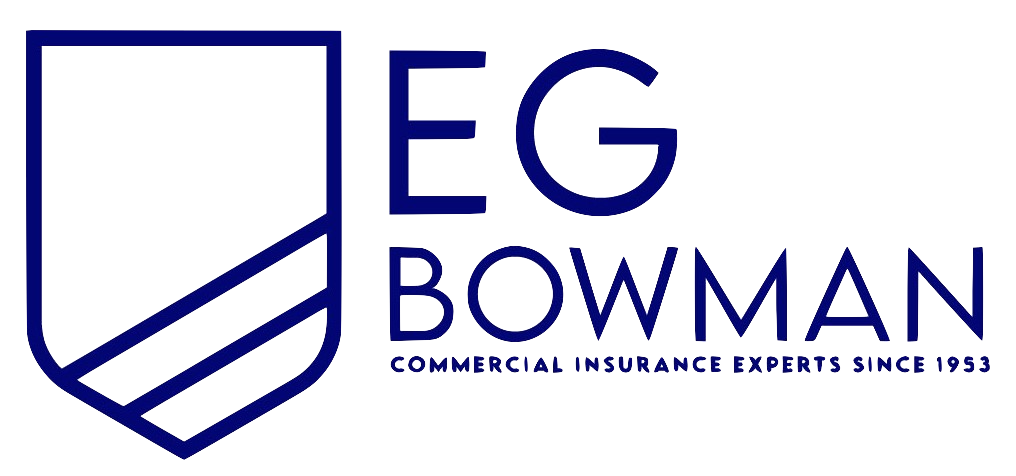New York Drywall Contractor Insurance
See How We're Different:
or Call Us: 212-425-8150

Most Common Business Policies
Index
Contact Us
Operating as a drywall contractor in New York presents unique opportunities and challenges. With the industry projected to reach a market size of $3.6 billion by 2025, it’s clear that demand for drywall and insulation installation services remains strong across the state. However, the construction environment is also marked by significant risks, including a recent surge in work-related injuries. Proper insurance coverage is essential not only to protect your business assets but also to ensure compliance and peace of mind in a competitive and sometimes hazardous industry.
In this comprehensive guide, you will find everything you need to understand about drywall contractor insurance in New York—from the types of coverage available to the factors influencing insurance costs and the latest industry trends affecting your risk profile.
Understanding the New York Drywall Industry Landscape
The drywall and insulation installation sector in New York is a substantial part of the construction market. According to IBISWorld, the industry is expected to grow steadily, reaching a market size of $3.6 billion by 2025. This growth is supported by over 1,100 establishments employing more than 12,000 workers statewide.
Such expansion means more projects and opportunities for contractors but also increases exposure to workplace hazards. As the industry grows, so does the complexity of managing risks, making insurance a critical component of doing business safely and sustainably. Additionally, the demand for skilled labor is on the rise, prompting training programs and apprenticeships to help cultivate a new generation of drywall professionals. These initiatives not only aim to fill the labor gap but also emphasize safety training, ensuring that workers are well-equipped to handle the challenges of the job.
Workplace Risks and Injury Trends
While fatalities in construction have decreased over recent years, the number of injuries has unfortunately risen. In New York City alone, 2023 saw a 25% increase in work-related injuries at building construction sites, with 692 injuries reported alongside seven fatalities. The total number of construction-related incidents reached 841 that year, highlighting the ongoing safety challenges contractors face. The nature of drywall work, which often involves heavy lifting, working at heights, and the use of power tools, contributes to this alarming trend.
Kyle Lacertosa, an Underwriter at Burns & Wilcox, points out that although fewer workers are dying on the job, the rise in injuries underscores persistent risks that drywall contractors must manage daily. These statistics emphasize the importance of having comprehensive insurance coverage tailored to the realities of the construction environment. Furthermore, the implementation of stricter safety regulations and the promotion of best practices in the workplace are crucial steps in mitigating these risks. Many companies are now investing in advanced safety technologies, such as wearable devices that monitor workers’ movements and alert them to potential hazards, showcasing a proactive approach to injury prevention. As the industry continues to evolve, the emphasis on safety and risk management will remain paramount in ensuring the well-being of workers and the sustainability of the drywall sector.

Types of Insurance Every Drywall Contractor Needs
Insurance for drywall contractors is not one-size-fits-all. Understanding the various types of coverage available will help you select policies that protect your business from financial loss due to accidents, property damage, or legal claims.
General Liability Insurance
General liability insurance is fundamental for drywall contractors. It covers third-party claims of bodily injury, property damage, and associated legal fees. For example, if a client or passerby is injured due to your work or equipment, this insurance helps cover medical expenses and lawsuits.
A recent study analyzing over 200 insurance quotes found that general liability insurance premiums for drywall contractors in New York vary widely—from $570 to $9,510 annually—depending largely on the contractor’s revenue and risk profile. This range reflects how insurers assess the scale and nature of your operations when determining premiums.
Choosing the right liability coverage limits and deductibles is essential to balance protection with cost-efficiency. Additionally, it’s wise to review your policy regularly, as changes in your business operations or project scope can impact your risk exposure and insurance needs.
Workers’ Compensation Insurance
Given the physical demands and risks of drywall installation, workers’ compensation insurance is legally required in New York for businesses with employees. This coverage provides wage replacement and medical benefits to workers injured on the job, protecting both employees and employers from financial hardship.
With the rise in construction injuries reported in New York City, having robust workers’ compensation coverage is more critical than ever. It ensures injured workers receive timely care while shielding your business from costly lawsuits. Moreover, maintaining a safe work environment can lead to lower premiums over time, as insurers often reward businesses with fewer claims through discounted rates.
Commercial Auto Insurance
Many drywall contractors use vehicles to transport materials and equipment. Commercial auto insurance covers accidents involving these vehicles, including liability and physical damage. This coverage is vital if your business owns or leases trucks, vans, or other vehicles used in daily operations.
In addition to protecting against accidents, commercial auto insurance can also cover theft or damage to equipment while in transit, which is crucial given the high value of drywall and tools. Furthermore, it can include coverage for hired and non-owned vehicles, ensuring that any vehicle used for business purposes is adequately insured, even if it is not owned by your company. Understanding the nuances of your commercial auto policy can help you avoid gaps in coverage that could lead to significant out-of-pocket expenses in the event of an incident.
Factors Influencing Drywall Contractor Insurance Costs
Insurance premiums for drywall contractors are influenced by several factors, many of which relate directly to the risks inherent in the work and the contractor’s business profile.
Business Size and Revenue
Insurers consider the size of your business and annual revenue when quoting premiums. Larger businesses or those with higher revenues typically face higher premiums due to increased exposure. For example, the wide range of general liability premiums—from under $600 to nearly $10,000 annually—reflects this variation in business scale. Additionally, larger companies may have more complex operations, which can introduce a variety of risks that insurers must account for. This complexity can include multiple job sites, a greater number of employees, and a wider array of subcontractors, all of which can contribute to potential liabilities.
Claims History and Safety Record
Your past claims history plays a significant role in premium determination. Contractors with frequent or severe claims may face higher rates. Conversely, maintaining a strong safety record and implementing rigorous safety protocols can reduce premiums. Insurers often look for evidence of safety training programs and regular safety audits, as these measures demonstrate a commitment to minimizing risk. Given the recent spike in construction site injuries in New York, insurers are paying closer attention to safety practices. Steven Hrab, Director at Burns & Wilcox, warns that rising incidents can push insurance premiums higher, potentially threatening the financial viability of businesses without adequate coverage. Furthermore, contractors who can showcase a proactive approach to risk management may find themselves in a better negotiating position when it comes to their insurance premiums.
Scope of Work and Project Types
The nature of the projects you undertake also affects your insurance costs. High-risk jobs, such as working on large commercial sites or at significant heights, may increase premiums compared to smaller residential projects. Additionally, specialized work, such as installations involving hazardous materials or complex structural elements, can also lead to higher insurance costs. Insurers often categorize projects based on their risk profiles, and those that fall into higher-risk categories may require additional coverage or endorsements, further impacting overall costs.
Geographic Location
Operating in urban centers like New York City can lead to higher insurance costs due to increased risks, including traffic, theft, and regulatory requirements. The concentration of construction activity and reported incidents in NYC contributes to this trend. Moreover, local regulations can vary significantly, with some municipalities imposing stricter safety and insurance requirements than others. This variability means that contractors must stay informed about local laws and compliance standards, which can also affect their insurance premiums. In addition, the competitive landscape in urban areas may drive contractors to seek more comprehensive coverage options to protect against potential liabilities arising from high-stakes projects, further complicating the insurance landscape for drywall contractors.
Emerging Industry Trends Impacting Insurance Needs
The drywall industry is evolving with new technologies and methodologies that influence risk management and insurance requirements.
Prefabricated and Modular Drywall Solutions
One notable trend is the rise of prefabricated and modular drywall components. These solutions offer faster installation times and reduce material waste, which can lower some on-site risks. However, they may also introduce new types of liabilities related to manufacturing and transportation.
Adopting these innovations can potentially improve safety outcomes, but contractors should review their insurance policies to ensure coverage aligns with these changing practices. More details on this trend are available through Cardinal Courier.
In addition to prefabrication, the integration of advanced technologies such as Building Information Modeling (BIM) is transforming project planning and execution. BIM allows for detailed visualization of drywall installations, enabling contractors to identify potential issues before they arise. This proactive approach not only enhances efficiency but also minimizes the likelihood of accidents on-site, further influencing the types of coverage that contractors may need. As these technologies become standard practice, insurers may need to adapt their policies to account for the reduced risks associated with better planning and execution.
Increasing Regulatory Scrutiny and Compliance
As work-related injuries rise, regulatory bodies are intensifying enforcement of safety standards. Contractors must stay abreast of local regulations to avoid fines and legal exposure, which can also impact insurance claims and premiums.
Moreover, the evolving regulatory landscape is prompting many companies to invest in comprehensive training programs for their employees. These initiatives not only help ensure compliance with safety regulations but also foster a culture of safety within the organization. By prioritizing employee training, contractors can mitigate risks associated with workplace accidents, which in turn can lead to lower insurance costs. Insurers are increasingly recognizing the value of such proactive measures, often offering incentives or discounts for companies that demonstrate a commitment to safety and compliance.
How to Choose the Right Insurance Provider
Selecting an insurance provider that understands the drywall industry and New York’s specific risks is crucial. Look for companies with experience in construction insurance and a strong reputation for claims handling. A knowledgeable provider will not only offer tailored policies but also provide valuable insights into the unique challenges faced in the New York construction landscape, such as navigating local regulations and environmental concerns.
Consulting with brokers or underwriters who specialize in construction risks can help tailor your coverage to your business needs. For instance, Burns & Wilcox offers insights into managing insurance in the New York construction sector, highlighting the importance of addressing rising injury rates through adequate coverage. They may also assist in identifying potential gaps in your existing policies, ensuring that you are not left vulnerable to unforeseen circumstances that could jeopardize your business.
Balancing Coverage and Cost
While cost is an important consideration, underinsuring can be far more expensive in the long run. Ensure your policies provide sufficient limits and cover the full scope of your operations. Regularly review and update your insurance as your business grows or changes. This proactive approach can help you avoid the pitfalls of outdated coverage, which might not account for new equipment, expanded operations, or shifts in the regulatory environment that could impact your liability.
Additional Risk Management Strategies
Beyond insurance, investing in safety training, proper equipment, and site management can reduce incidents and claims. These efforts not only protect your workforce but can also lead to lower insurance premiums over time. Implementing a robust safety program that includes regular training sessions and drills can foster a culture of safety within your organization. Additionally, utilizing technology such as project management software can enhance communication and streamline operations, further minimizing risks on the job site.
Moreover, maintaining a strong relationship with your insurance provider can be beneficial in navigating claims and understanding policy nuances. Regular check-ins can provide opportunities to discuss changes in your business and any emerging risks that may require additional coverage. This collaborative approach not only helps in securing the best possible terms but also reinforces your commitment to risk management, making you a more attractive client to insurers.

Conclusion: Protecting Your Drywall Business in New York
The drywall contracting industry in New York is thriving but comes with inherent risks that require careful management. With a market projected to reach $3.6 billion by 2025 and a workforce of over 12,000, the stakes are high for contractors who want to safeguard their businesses.
Understanding the types of insurance available, the factors influencing costs, and the latest industry trends will empower drywall contractors to make informed decisions. Proper insurance coverage is not just a regulatory necessity but a strategic investment in your company’s future.
As injury rates climb and construction sites become more complex, partnering with knowledgeable insurers and maintaining strong safety practices are key to navigating the challenges ahead. For more information on the current state of construction site injuries and insurance implications in New York, visit Burns & Wilcox.
